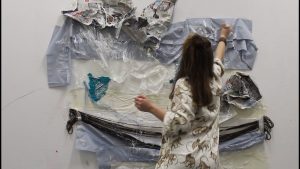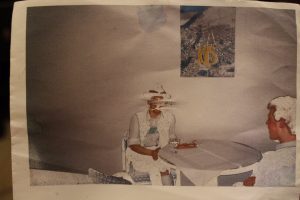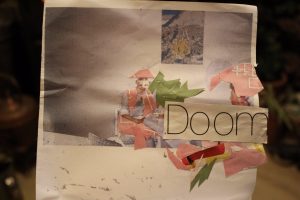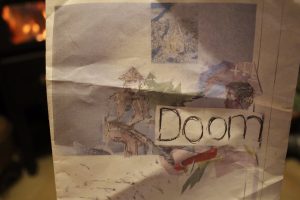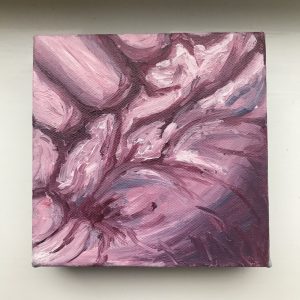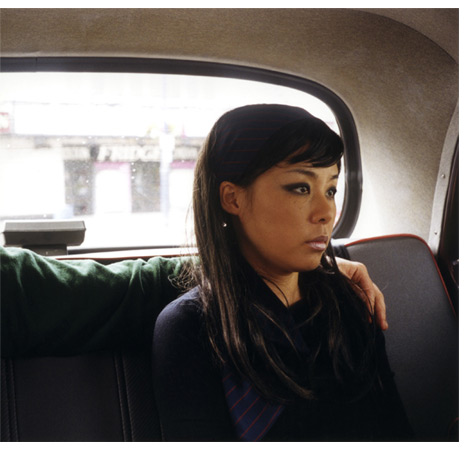Process, performative, gestural, fluid, energetic, interactive, spontaneous, rebellious, playful, documentative
My practice has evolved within the past few months and is moving towards performance-based work. Movement is an important aspect of my work, mainly due to the fact that I want to celebrate process as opposed to the idea of an outcome. I believe artists put too much emphasis on the importance of outcomes, and should focus more on how art is made in the first place. Therefore, documentation is also a big part of my work: without documentation, I wouldn’t be able to show the initial process.
The way I channel movement is energetic, fluid and gestural. I utilize performance to make marks, and this is evident within the film I created for the artist film project (as shown in the screenshot attached). Dramatic movements and gestures are important to emphasise concepts of a celebration of process. I find my work almost rebellious because as mentioned above, I’m not invested in notions of outcome: I want my work to be spontaneous as a way of rebelling against the confines of how we view art. Furthermore, I have attempted to be rebellious in my material choice, to move further away from traditional mediums. Using paint and paintbrushes in a ‘traditional’ way is something that I believe is outdated: instead, I have been looking into using materials such as carpet stain remover, roll-on deodorant and clingfilm. These mundane materials are not only obscure, but the fact that there isn’t a ‘set’ way to use them allows for playful, authentic experimentation.

